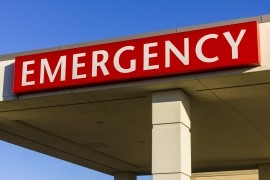by Contributor

(Aug. 29, 2022) — Emergency preparedness is important for transport and logistics businesses. Check out this blog post to find out why and how you can plan for disruptions.
Logistics and transport businesses have to be prepared for emergencies. That means having a plan in place for when things go wrong. It also means having the right supplies and equipment to continue operating even under challenging circumstances.
In an emergency, every second counts. That’s why it’s essential to have a well-organized storage area where you can find everything you need quickly. And it’s also important to have backup plans for critical operations to keep your business running no matter what happens. So here are some tips on preparing your transport and logistics business for an emergency.
Understand the Risks
The first step in emergency preparedness is to understand your business’s risks. What kind of emergencies are most likely to occur in your area? Are you at risk of floods, hurricanes, or other natural disasters? Do you operate in a room with a high crime rate?
Your plan should take into account the possibility of different types of emergencies. That might include things like severe weather, power outages, fires, floods, and even truck accidents. And it should cover both the short-term and long-term impacts of an emergency.
Knowing the risks will help you determine what steps you need to take to protect your business. For example, if you’re at risk of a power outage, you might need to invest in a backup generator. Or, if you’re at risk of a fire, you might need to create an evacuation plan.
Create a Plan
Once you’ve identified the risks, it’s time to create a plan. This detailed document should outline how your business will respond to an emergency. Your plan should include procedures for things like evacuating the premises, shutting down operations, and contacting employees. It should also have information on where you’ll store critical supplies and how you’ll communicate with employees during an emergency.
Make sure your plan is well-organized and easy to understand. And be sure to review it regularly, so everyone understands their roles and responsibilities. You might also want to consider creating a digital version of your plan that can be easily accessed by all employees.

Prepare Your Facility
Your facility should be prepared for an emergency. That means having things like backup generators, proper lighting, and clear exit signs. It also means having the right supplies on hand, such as first-aid kits and emergency food and water.
If you have a warehouse, make sure your shelves are well-organized and clearly labeled. That way, you can find what you need quickly in an emergency. And be sure to regularly check expiration dates on food and other supplies. You should also create an evacuation plan for your facility. This should include multiple exit routes and a designated meeting place.
Have Emergency Numbers on Hand
Make sure you have a list of emergency numbers for things like the police, fire department, and ambulance. You should also have the contact information for your insurance company and any other businesses you work with. Keep this information in a central location, so it’s easy to find in an emergency.
You should also make sure your employees have this information. They should know how to reach you and other key members of the team. For example, if one of your trucks is involved in an accident, they should know who to call. Having an experienced truck accident law firm on hand can help ensure you get the compensation you deserve.
Make sure your employees understand the importance of following emergency procedures. And make sure they know what to do if they witness or are involved in an accident or other emergency.
Train Your Employees
Your employees are your most important asset. That’s why it’s essential to train them on emergency procedures. Make sure they understand the plan and know what to do in an emergency. You might also want to consider conducting regular drills so everyone knows what to do when things go wrong.
You should also make sure your employees are familiar with the layout of your facility. They should know where critical supplies are located and how to use the equipment. In addition, they should know who to contact in an emergency. You might also want to consider giving them a list of emergency numbers.
There you go! These tips will help you prepare your transportation and logistics business for an emergency. No one knows when an emergency will happen. That’s why it’s important to always be prepared. By planning and training your employees, you can help ensure your business runs smoothly-no matter what happens. So, don’t wait. Get started on your emergency preparedness plan today!
